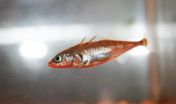(Press-News.org) This press release is available in German.
Researchers from Jena and Greifswald used GPS satellites for a long-term behavioral monitoring of land crab migration on Christmas Island. In cooperation with colleagues from the Zoological Institute at the University of Greifswald, scientists from the Max Planck Institute for Chemical Ecology in Jena, Germany, used a GPS-based telemetric system to analyze movements of freely roaming robber crabs, which is the first large-scale study of any arthropod using GPS technology to monitor behavior.
This analysis focussed on the coconut crab Birgus latro, a terrestrial crustacean living on tropical islands in the Indo-Pacific. Weighing up to 4 kg, Birgus latro, also called the giant robber crab, is the world's largest land-living arthropod. Its lifespan can reach 60 years. The study was carried out on Christmas Island in the Indian Ocean which has a largely undisturbed population of about several hundreds of thousands coconut crabs
Between 2008 and 2011, 55 male robber crabs were equipped with GPS tags which successfully recorded more than 1,500 crab days of activity and followed some individual animals for as long as three months. Besides site fidelity with short-distance excursions, the data revealed long-distance movements between the coast and the inland rainforest. These movements are likely related to mating, saltwater drinking and foraging.
The tracking patterns indicate path following as a main navigation strategy. Furthermore, translocation experiments showed that robber crabs are capable of homing over large distances. The search behavior induced in these experiments suggests path integration to be another important navigation strategy.
The GPS tags were custom-made by e-obs GmbH (digital telemetry) in Munich in a limited-lot production. The devices can be programmed in such a way that they record GPS positions at intervals of one hour over a period of several months. The tag also contains an accelerometer to record movements in different (x, y, or z) directions and thus the activity of the crabs. Recorded data were downloaded by the scientists once a week via a radio link within a range of about 200 meters, so that the crabs were not disturbed. The devices send out radio impulses (pingers) in order to enable localization of the crabs via wireless connection using a high-sensitivity directional antenna. Similar devices were recently used in a study to monitor bird migration. The development of further miniaturized electronic devices and batteries should help to establish this method successfully for the study of even smaller animal species in the future.
INFORMATION:
Original Publication:
Krieger J, Grandy R, Drew MM, Erland S, Stensmyr MC, Harzsch S, Hansson BS (2012). Giant robber crabs monitored from space: GPS-based telemetric studies on Christmas Island (Indian Ocean). PLOS ONE, 7(11): e49809. doi:10.1371/journal.pone.0049809 http://dx.doi.org/10.1371/journal.pone.0049809
Further Information:
Prof. Bill S. Hansson, MPI Chemical Ecology, hansson@ice.mpg.de, +49 (0)3641 571401
Dipl. Biol. Jakob Krieger, Zoologisches Institut und Museum - Cytologie und Evolutionsbiologie - Ernst-Moritz-Arndt-Universität Greifswald, jakob.krieger@uni-greifswald.de, +49 (0)3834 86-4109
Prof. Dr. Steffen Harzsch, Zoologisches Institut und Museum - Cytologie und Evolutionsbiologie - Ernst-Moritz-Arndt-Universität Greifswald, steffen.harzsch@uni-greifswald.de
Picture Requests:
Angela Overmeyer M.A., +49 3641 57-2110, overmeyer@ice.mpg.de
or download from http://www.ice.mpg.de/ext/735.html
Researchers use GPS tracking to monitor crab behavior
2012-11-15
ELSE PRESS RELEASES FROM THIS DATE:
Born-again star foreshadows fate of solar system
2012-11-15
Astronomers have found evidence for a dying Sun-like star coming briefly back to life after casting its gassy shells out into space, mimicking the possible fate our own Solar System faces in a few billion years.
This new picture of the planetary nebula Abell 30, located 5500 light-years from Earth, is a composite of visible images from the NASA/ESA Hubble Space Telescope and X-ray data from ESA's XMM-Newton and NASA's Chandra space telescopes.
'Planetary nebula' is the name given to the often-concentric shells of stellar material cast into space by dying stars. To astronomers ...
X-rays from a reborn planetary nebula
2012-11-15
These images of the planetary nebula Abell 30, (a.k.a. A30), show one of the clearest views ever obtained of a special phase of evolution for these objects. The inset image on the right is a close-up view of A30 showing X-ray data from NASA's Chandra X-ray Observatory in purple and Hubble Space Telescope (HST) data showing optical emission from oxygen ions in orange. On the left is a larger view showing optical and X-ray data from the Kitt Peak National Observatory and ESA's XMM-Newton, respectively. In this image the optical data show emission from oxygen (orange) and ...
Streams show signs of degradation at earliest stages of urban development
2012-11-15
The loss of sensitive species in streams begins to occur at the initial stages of urban development, according to a new study by the USGS. The study found that streams are more sensitive to development than previously understood.
"We tend not to think of waterways as fragile organisms, and yet that is exactly what the results of this scientific investigation appear to be telling us," said USGS Director Marcia McNutt. "Streams are more than water, but rather communities of interdependent aquatic life, the most sensitive of which are easily disrupted by urbanization."
Contaminants, ...
Umbilical cord cells outperform bone marrow cells in repairing damaged hearts
2012-11-15
TORONTO, Ontario (13 November, 2012) - A study published this month by researchers at the University of Toronto and Toronto's Princess Margaret Hospital has shown that cells derived from the umbilical cord, "Human Umbilical Cord PeriVascular Cells" (HUCPVCs), are more effective in restoring heart function after an acute myocardial infarction (in common parlance, a heart attack) in a pre-clinical model than a similar cell population derived from bone marrow.
At present, mesenchymal cells, known to release a series of factors that stimulate tissue repair, and control inflammation, ...
Study Tracks Brain Gene Response to Territorial Aggression
2012-11-15
CHAMPAIGN, Ill. — With a mate and a nest to protect, the male threespined stickleback is a fierce fish, chasing and biting other males until they go away.
Now researchers are mapping the genetic underpinnings of the stickleback's aggressive behavior. Armed with tools that allow them to see which genes are activated or deactivated in response to social encounters, a team from the University of Illinois has identified broad patterns of gene activity that correspond to aggression in this fish.
A paper describing their work appears in the Proceedings of the Royal Society: ...
Like a game of poker, school programs' success can hinge on principals going 'all in'
2012-11-15
PITTSBURGH—When principals go "all in" in terms of supporting school programs, teachers stand a better chance of successfully implementing change, according to new research published by the University of Pittsburgh and the University of Virginia (UVA).
The researchers report in Prevention Science that if school principals lack enthusiasm or show little support, they are actually viewed as a hindrance by teachers, posing "major challenges" to the success of school programs like the Responsive Classroom®, an approach boasting social-emotional learning. Additionally, apprehensive ...
Women eager to negotiate salaries, when given the opportunity
2012-11-15
Although some scholars have suggested that the income gap between men and women is due to women's reluctance to negotiate salaries, a new study at the University of Chicago shows that given an invitation, women are just as willing as men to negotiate for more pay.
Men, however, are more likely than women to ask for more money when there is no explicit statement in a job description that wages are negotiable, the study showed.
"We find that simple manipulations of the contract environment can significantly shift the gender composition of the applicant pool," said UChicago ...
Study shows different approach after progression in non-small cell lung cancer patients
2012-11-15
DENVER – Right now, the best known treatment for patients with metastatic non-small cell lung cancer (NSCLC) with anaplastic lymphoma kinase gene rearrangements (ALK) or epidermal growth factor receptor mutations (EGFR) is crizotinib or EGFR tyrosine kinase inhibitors (TKIs), such as erlotinib, respectively. However, progression inevitably occurs. When it does, having no clear guidelines and/or indications, most patients are treated with chemotherapy. A new study published in the December 2012 issue of the International Association for the Study of Lung Cancer's (IASLC) ...
Study reveals insights that could aid in therapeutic use of mesenchymal stem cells
2012-11-15
BOSTON – Mesenchymal stem cells (MSCs), are a newly emerging cellular therapy being tested in approximately 250 clinical trials worldwide to help repair damaged tissues, such as injured heart muscle following a heart attack. The problem is that when culture-expanded MSCs are injected into the circulation, they have trouble gaining access to the inflamed tissues—exactly where their help is needed.
Now, research led by investigators at Beth Israel Deaconess Medical Center (BIDMC) and Brigham and Women's Hospital (BWH) reveals new insights into how MSCs "traffic" from the ...
Youth with autism gravitate toward STEM majors in college -- if they get there
2012-11-15
It's a popularly held belief that individuals with an autism spectrum disorder (ASD) gravitate toward STEM majors in college (science, technology, engineering mathematics).
A new study, co-authored by Paul Shattuck, PhD, assistant professor at the Brown School at Washington University in St. Louis, confirms that view yet finds that young adults with an ASD also have one of the lowest overall college enrollment rates.
The study, "STEM Participation Among College Students with an Autism Spectrum Disorder," was published online Nov. 1 in the Journal of Autism and Developmental ...



